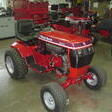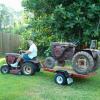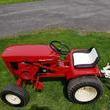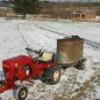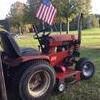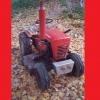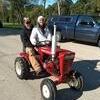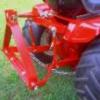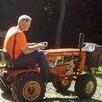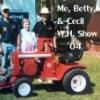Leaderboard
-
in all areas
- All areas
- Markers
- Marker Comments
- Marker Reviews
- Articles
- Article Comments
- Article Reviews
- Classfieds
- Classified Comments
- Classified Reviews
- Wiki's
- Wiki Comments
- Wiki Reviews
- Blog Entries
- Blog Comments
- Images
- Image Comments
- Image Reviews
- Albums
- Album Comments
- Album Reviews
- Files
- File Comments
- File Reviews
- Posts
-
Custom Date
-
All time
November 28 2011 - May 12 2024
-
Year
May 12 2023 - May 12 2024
-
Month
April 12 2024 - May 12 2024
-
Week
May 5 2024 - May 12 2024
-
Today
May 12 2024
-
Custom Date
02/25/2024 - 02/25/2024
-
All time
Popular Content
Showing content with the highest reputation on 02/25/2024 in all areas
-
15 pointsNever had a truck of my own. I always borrowed dad's or my father in laws for my horse wrangling adventures. Today I changed that. I hope to get years and years of service out of this rig! 2024 Ram 2500 Big Horn.
-
14 pointsPow’R Pup My father subscribed to several magazines while I was growing up. Mechanix Illustrated, Popular Mechanics, and Science and Mechanics were my favorites. Their pages were full of wonderful projects and ideas that stimulated a young boys mind. I can recall several “You Can Build This” articles that were so intriguing that they have stuck with me for sixty years or longer. One of them was the “Pow’R Pup Suburban”, a small garden tractor that could be built from salvaged auto parts which were readily available at very low costs at the time. The article appeared in the August 1961 edition of Science & Mechanics and gave an overview of the project with a full set of detailed drawings available for $ 10.00. I didn’t buy the set of plans, wish I had, but the article stuck with me. It might cost a bit more than $ 175.00 to build the Pow’R Pup today. If you happen to have a 1932 to 1948 Ford transmission and rearend hanging around as well as a 1951 to 1953 Studebaker steering gear and related components you are off to a good start. The price of machining of various parts has probably gone up too. I doubt that an old Ford axle could be shortened, threaded and a keyway cut for $ 10.50 anymore. Nonetheless it is fun to look at these old magazine projects and remember what it was like to be a kid. Here are some pages from the article.
-
9 points
-
7 pointsI do not have metal working stuff so this is how I made some ..newer ones i use heim jonts Fine threaded rod from McMaster. 1/4" 6 inch pipe nipples. You have to run a 3/8 drill through them to clean them up but the ID of 1/4 pipe is just about 3/8
-
7 pointsGlad this is restoring good memories for some of us.I have found several other "Build This Tractor" articles I will be posting from time to time.
-
7 pointsMy grandpa had an old metal cabinet in his shed back on the farm in Iowa filled with old popular mechanics magazines. Spent many an hour reading and imagining the possibilities. Kids today have tic toc and instagram....guess that's why so many of us old farts are here......
-
7 pointsFlight is confirmed today, touching the States on june, 15.th @ New York JFK
-
6 points
-
5 points
-
5 pointsI use 1/2" heims joints.These rods were turn down from 5/8" to 1/2" then fine treaded. I use only right hand heims joints don't have a left hand die. I useally drill and tap the spindles to a 1/2 fine and bush the ones on the triangle down to 3/8". The last ones I made with 1/2" rod.
-
5 pointsHilarious about the Red Lobster Mike. Last week Cindy drags me out new car shopping she wants to get rid of her Prius. She settles on a Subaru Forester @Achto. In order to compensate me for my misery not to mention lost shop time I make her take me to R L for lunch... Pick it up tomorrow & she's gotta take me to Olive Garden @Ed Kennell !
-
5 pointsMine is a 2018 3500 with the High Output Cummins. Congratulations on the new truck Mike, these are beasts. Mine has zero issue pulling our 43’ 5th wheel.
-
5 pointsRefreshed some front rims using a card board trim. (we don't have playing cards). lol just cut an oval out overlap the pieces, of course got to push the bead down some.
-
4 pointsIve used it for about an hour, works great but looked rough, and i want to preserve it. After going through it, the hardware is in good shape, the gang bolts aren't worn but they do all have a slight bend to them...nothing too concerning, these are fairly expensive to replace so ill use them. Discs have no wear but a few spots where the edges are eroded from sitting. Its going down to a bare frame, nothing left strip and repaint, clean out the old grease and feed it new grease at the gangs. Doing the rear 2 first and the rear frame sections, then the front 2 and hitch section.
-
4 pointsMore forward progress. Worked on making the C-101 belt guard work with the 1257 rear sheet metal. In order to do this I needed to make a filler panel to bolt to the 1056 sheet metal. I wanted some weld nuts for this piece, which I swore I had some in stock. Unfortunately I can not seem to find them. Instead of making a trip to town to spend money on some new ones I decide to just grab a strip of 7ga and make what I needed. Save time & money. With these welded on to my extension piece it will be much easier for mounting. Also needed to add a mount for the front of the belt guard. Seems my engine is now solid mounted I made a piece that could be bolted to the engine. Some minor trimming where the belt guard meets the foot board and it fits like it was made to be there. On to the next fitment issue. Fender pan does not sit all the way down with the belt guard. Again, a little minor trimming to get things to fit properly. Last project, add some bumper plates to the back of the tractor. The purpose of the bumpers are to stop the eliminator from running into the driver in the event that the tractor should stop faster than the eliminator. I have seen this happen with modified garden tractors that are pulling 20+mph on the track, but have not seen it happen with a stock tractor pulling at 3 to 4mph. But.... Rules are rules so I must adhere. For bumpers I simply added some plates to the wheelie bars. With these added I thought that I was done with fab work. Then I read over the rules again, sent a picture to one of the officers of the club that I plan on pulling with, and received notice that I need to do some more fab work. Take a look at the next picture. The issue here is that there is too much exposed belt. I will have to make some type of belt guard extension to cover this up. Hopefully I will be able to get this made next weekend then I can move on to engine mods.
-
4 pointsFor a few dollars more, buy good quality lined jeims joints, the frist one I bought in 1989 are still tight.
-
4 pointsThis was on my Keychain for the better part of 40 years at work. Even though a normal wrench size was 1-1/16 and 1-1/8 this little fellow came in handy a lot.
-
4 pointsAt DuPont I spent a lot of my time working in a full acid suit hooked up to breathing air. Hands were numb from the cold all winter with the double layers of rubber gloves and you were a total ball of sweat all summer. Good times.
-
4 pointsI just have to calm down my Trottle foot. 🤪 i knew this can be very expensive....😎 ....... don‘t ask why i knew this...... You forgot maybe, i live in Bavaria.. Here we have few miles Autobahn, what can be freely driven as long as there is no electric Car like Tesla or Polestar to prevent this. Did you ever drive in Munich or Berlin? So you guy‘s don‘t have worries about. Chaotic traffic can not kill me, that’s for shure - much more dangerous for me are Summer temperatures below 18deg.C That is really dangerous for me.. 😎🥳 closely to fridge... 😇 😂
-
4 pointsSHOCKED I TELL YA!.......So I had a lot of good suggestions from folks on this thread and started with an overnight Lowes metal strip on one small piece thinking I would repaint. Cleaned off the residue and primed it red but just didn't seem to be what I wanted.....I felt the "survivor" needed to retain some of that flavor but the rust was just SO BAD ( see pictures above). After some messing around I discovered using the Lowes strip for just a couple hours removed much of the rust and voila! There was actually still some red underneath all that rust. Have to scrub the acid off with water and stiff brush and some sanding with 1000 grit. She still looked pretty dull and rusty after the treatment. I wanted the "patina" to stand out so I used some Penetrol on a test piece. Wow! just what I was looking for. Respect for the original finish yet giving the old girl a special shine and stopping any further rust. Probably not everyone's cup of tea but I am pleased with the results.
-
4 pointsHere are the ones with the 1/2" rod. I got 1/2" to 3/8" steel bushings from Lowes and cut them down, had to put the on a bolt in the drill press and file the 1/2" down to get them in the heims joints. Just used 3/8" bolts at all ends. had to run the die on them to get them to tighten on the heims joins.
-
4 pointsI have a friend who has been trying to sell me one of his three lathes. When I asked why three lathes, his response was “Why not?” In response to his pitch, I tell him I prefer having a friend with a lathe to owning one myself! Next time I see him, I’ll get some more details!
-
4 pointsAir cleaner decal installed. Model number decal installed. Do not tow decal installed.
-
3 pointsComplete motor. Missing only flywheel screen. Is proper spec number and comes with all that's photoed. Call or text with any questions.
-
3 pointsI didn't know that Ed. No wonder now why my 18 Silverado doesn't have one. They are cold blooded Mike but you should have gotten the engine heater and cold weather bra in your package. Not to mention the heated seats and wheel. Cindy's new ride has heated seats but not wheel ... almost a deal breaker for her. Lookin to that too Kev... get rid of some these horses that belong to others... free up some stalls for more new to me's...
-
3 pointsThe sealing for the shaft is the two O rings. O rings are more forgiving about shaft wear than seals and it is pretty clean in there not like axles etc. But more important the shaft doesn't move very much only a partial turn when you change speed not a continuous spinning like a pump input shaft Have never seen one with any noticeable wear on the shaft. The large O ring can be very hard to get in and stay seated in the triangular plate. That is why I switched to a square profile O ring for the large one, some grease to hold it and I haven't had any re-leaks...
-
3 pointsAlmost done with this little fella, so I rolled it out in the sunshine today. All tractors need a little sunshine, especially those with fresh paint! The cows didn't seem interested for whatever reason. Still got a few more things to do. Electrical, decals (ships tomorrow from Terry), and yes- finish painting the front wheels. And the dreaded belt guard... I'm guessing the PO wanted access to the idler without removing it. Gonna be a fun fix for sure!
-
3 pointsFender and seat gas lift bracket bolted on using all SS hardware. Hood bolted on using SS hardware. I still need to order the decals for this machine.
-
3 points
-
3 points
-
3 pointsI guess great minds think alike @WHX??!! So far it's been great! Put 100 miles on it yesterday and it was getting between 20 and 22mpg. As far as the gas cap though it has a normal one! I know some of the earlier ones didn't even have one.
-
3 points
-
3 pointsHood bolted on. Underside of hood. Air cleaner lid polished Headlights plugged in with some grease in the plug to hopefully stop corrosion.
-
3 pointsI replaced a spark plug. And what a treat it was investing no more than seven minutes locating the problem, finding the box of spares, installing the plug and hearing that 341 roar back to life! I wish every problem could be that easy to fix. It’ll soon be time to pull off that snow blower that’s on target to see another full season of unemployment. I’m not complaining, though.
-
3 pointsStock OE Wheelhorse rod ends are mostly 3/8. I use 7/16 greasable tie rods from McMaster Carr. Normally double male. Normally RH thread on both ends. A LH thread on one end would make adjustment easier but I don't have access to the LH taps or dies. We only adjust during assembly so it isn't a big deal. The reason for the 7/16 is two fold. 1. The holes on the steering system from the OE 3/8 rods are often egged out so drilling up to the 7/16 corrects that. 2. The larger rods are ALOT stronger than the smaller ones. My biggest personal hindrance is access to a lathe. I've had a few folks make me up some center sections using different sizes of round or even hex shaped stock.
-
3 pointsAS did I - my Dad had a woodshop in the basement. He had about 100 back issues of Popular Machanics above the workbench....
-
3 pointsI worked at DuPont as a millwright for 40 years and we used cheaters sometimes as well. A length of 2" scaffold tube slid onto a 36" pipe wrench got most things moving. Also giving the fitting a good whack with a hammer helped break it loose as well. I had to lubricate the pipe wrenches quite a bit because we worked mostly outside and with steam and water but even worse was the acid lines. HCL made everything it touched rust. However, the HF while deadly to humans was inert to most metals.
-
3 pointsThat came from work likely around 10 years ago. The cabinet had been picked quite bare so they let me have it. I was able to gradually source all the missing pieces one by one and it is now complete. It does not get used very often but sure is handy when required. Inside is a shadow board with all the part numbers which made finding the right pieces easier. Some of the puller jaws I ordered new because all the used ones I could find were bent or damaged.
-
3 pointsCongrats Mike you are gonna love it. You should get 24-26 MPG you drive like my wife. 18-20 you drive like Dan. Soon as you plug into the 7 pin it's 12-14 no matter how you drive. The computer changes up everything. Sad thing is there are lots of choked off ponies in that motor. Can't let them out without serious mods and deletes tho. That display is mind blowing... twice the size of mine. Your whole dash is a bit different than my '17. I've got a whopping 25,000 miles on it now. Got beaters with heaters for winter. Tell the boys about the gas cap! Coach @nylyon has a '19 I believe.
-
3 points
-
3 pointsWell thanks to this awesome site I spent more money yesterday. Got a 6" Ridgid coming in the post. We went to see my parents yesterday and were helping them with some quick vehicle maintenance. While looking around for some oil I found a Ridgid 10" wrench on my father's garage wall. I'll put in a requisition for that when they're done with it.
-
3 pointsLooking forward to meeting you. We will all pray that your flight is safe and you survive the drive away from the airport in New York. Traffic there is crazy.
-
3 pointsI love the outlines of these old Cars. they be soooo beautiful. they simply have pretty much more charme than any of the today Cars.
-
3 points
-
3 points
-
3 pointsEshelman Garden Tractors and so much more. The Cheston Eshelman Company manufactured several garden tractor models with one, two, three or four wheels to fit the needs of any gardener. One of the unique features of Eshelman tractors was the use of cast iron and cast aluminum body parts rather than sheet metal. They also built mowers, tillers micro-cars, scooters, postal delivery vehicles, motor scooters, pleasure boats, aircraft, golf carts, snowplows, trailers, and more. Eshelman also built dreams of the future. When Mike Vance popularized the phrase "thinking out of the box" he must have had Cheston Eshelman as a template for that expression. His moto seemed to be if everyone’s going that way, I will go this other way. Yeah, I’m gonna stumble but I’m also gonna stumble upon an idea no one else came up with. To say that he was unorthodox is an understatement. According to a July 19, 1942 article in the Kansas City Star newspaper (article below), Eshelman had been rescued from a 1939 crash into the Atlantic Ocean 173 miles east of Boston. He told the fisherman who saved him that he had been on his way to Mars in his rented airplane. His pilot’s license was revoked. A couple of years later Eshelman designed and built a successful prototype flying wing aircraft. He boasted that his design would make all existing aircraft prehistoric and obsolete. A newspaper article called it a “Flying Flounder.” Eshelman contacted President Franklin Roosevelt in 1942 urging him to allow Eshelman to build these planes for the military. Roosevelt wasn’t interested which may have saved the lives of an untold number of pilots. Since the skis seemed a bit unfriendly Eshelman had the brainstorm to buy surplus steel airplane fuel tanks from the military, and repurpose them as a “Rocket Boat,” capitalizing on the space craze of the day. Eshelman didn’t stop there. He next set his sights back on the open waters with a concept for a combination boat/car, patented in 1961. One of the more interesting features of the amphibious car is a sliding canopy, so the vehicle could be used for all-weather boating, not just on sunny days. Unfortunately, this idea never materialized, even in prototype form. In the 1953 Eshelman’s ventured into small mail-order cars advertised in magazines. Small ads appeared in the back of Mechanix Illustrated, Popular Science, Better Homes and Garden, and other magazines offering "cars" for just a few hundred dollars. The "Sport Car", a basic $295 15 MPH "Child's Sport Car" for two children powered by a 2 HP Briggs & Stratton engine, and the $395 25 MPH "Adult Sport Car" for one adult which featured the three-horsepower Briggs & Stratton engine, battery-operated head and tail lamps, but no charging system for the battery, seat-cushion upholstery, and trademark chrome "rocket" emblems on its sides. A factory brochure advertised 70 MPG fuel consumption and claimed the car was Ideal for short trips. When it's too far to walk—to the shopping center, to the beach, to work—this little car is the perfect 'runabout'. Even the children can use it about your property. It's so easy to operate and sturdily built. Add an Eshelman trailer cart and it's perfect for hauling and light delivery. Early models had belt drive to a simple lever-operated forward/reverse friction transmission between the rear wheels. This transmission was under the bench seat, and drove power to serrated, cast iron "gears" which drove the wheels through friction to the 2.25x10 semi-pneumatic tire treads. Braking was done by reversing the transmission. This system resulted in heavy tire wear and was soon replaced by a drive belt from an engine-mounted centrifugal clutch to a jackshaft under the seat, and chain drive to sprockets on one rear wheel. The new brake system used paddles to the rear tire treads to stop. Even vice president Richard M. Nixon had an Eshelman connection in 1955 when he was photographed at a gasoline pump "fueling" a Child's Sport Car in a March of Dimes "Fill 'Er Up for Polio" publicity campaign while holding the pump nozzle at the car's rear (most Eshelman cars were fueled under the hood). Though he was a dreamer. he realized the majority of his income came from selling lawn tractors and gardening apparatus so he got his head out of the sky and his feet back on dry land thinking of more practical vehicles like garden trucks and service carts. 1958 he landed a sizable contract to build three-wheeled delivery vehicles for the U.S. Postal Service. In 1965 Eshelman began selling "real" cars, 2,400-pound, six-cylinder engine cars named the Golden Eagle. Regrettably these cars already had another name: Corvair! He bought them in large quantities and changed the badging and trim including a gold-colored Eshelman insignia. General Motors promptly obtained a Cease-and-Desist order against Eshelman. He continued to market the appearance package for those who wished to apply them to their personal cars. Corvair connoisseurs consider the Golden Eagle to be the most collectable models ever produced. His last hurrah was the marketing of his patented "crash absorber," a pioneering 15 mph energy-absorbing front bumper fashioned from a vehicle's spare tire. He often demonstrated the bumper by ramming his own car into retaining walls. In 1967, Eshelman produced the final Eshelman Golden Eagle Safety Cars based on new 1967 Chevrolet Novas, all equipped with front "crash absorbers" sold through used-car dealerships. Cheston L. Eshelman was one-of-a-kind. No one before or since built such colorful and unorthodox machines for the air, land and water. He died in 2004 at age 87, definitely having brought plenty of smiles to people’s faces with his creations.
-
3 pointsHello everybody, it's been awhile since I've posted, but I've just sanded down the hood on the 1969 charger 12 to look like patina, don't know how good of a job I did, but the idler pulley also went, so I replaced that as well. Got some chains put on it for the remaining months of winter too.
-
2 pointsMy mom gave us this little barrel yesterday. She knows it's been passed down through her mom's family least 4 or 5 generations including myself. Trina found a similar listing online indicating it could have been filled with nails or similar, gross weight around 100 lbs. It measures 18" high, 10" across.
-
2 pointsSo just an update. I started checking connections and what not. The previous owner had installed a small car battery in the tractor that actually pushes on the fuse block and covers the fuse block. It actually loosened the fuses n the holder over time. I pulled all the fuses and speed the terminals out and it started right up and runs fine. I put a thin piece of wood under the battery so it won't hit the fuses for now, until I get the correct battery and can fix it correctly. thanks for the advice.
-
2 points

